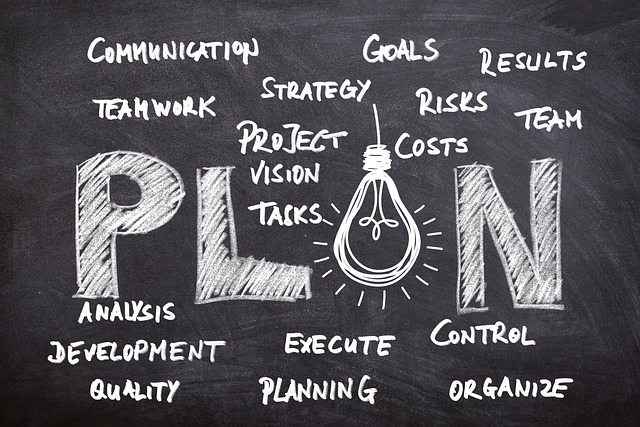Understanding the Landscape of Personal Goals and Professional Demands
Balancing personal goals with professional demands can feel like juggling flaming swords while riding a unicycle. Many people find themselves caught in an endless cycle of work commitments, striving to meet the expectations of their jobs while simultaneously trying to pursue their dreams and aspirations. This struggle isn’t just about the daily grind; it’s about finding a sustainable way to create life satisfaction. Individuals desire fulfillment in both their professional and personal lives. However, they often face conflicting priorities that lead to frustration and overwhelm. This article dives deeply into how one can harmonize these two often-competing aspects of life, aiming to provide not just theoretical insights but also practical, actionable advice.
The Importance of Setting Clear Personal Goals
Understanding your personal goals in context is crucial. These ambitions are your guiding stars. They offer direction and purpose beyond your everyday job responsibilities and tasks. Personal goals can encompass a vast array of ambitions, from achieving a specific fitness level to cultivating hobbies, enhancing relationships, or expanding one’s knowledge base through education. Setting clear, attainable personal goals gives you something to strive for and provides a fulfilling reason to re-energize after professional demands have drained your energy.
An essential step to making those goals come to fruition is to write them down. Research indicates that individuals who jot down their goals are significantly more likely to achieve them. Writing creates accountability, turning lofty ideas into tangible plans. It’s likewise beneficial to break overarching goals into smaller, manageable tasks. This technique not only helps prevent feelings of being overwhelmed but also allows for regular checkpoints to celebrate small wins, keeping motivation high.
Another important factor in goal setting is ensuring that your personal ambitions align with your core values. Reflecting on what truly matters to you makes it easier to prioritize what’s worth pursuing. For instance, if family is a fundamental value, setting a goal that allows for more family time can lead to a sense of fulfillment. Establish some indicators of success that resonate with your personal vision. By carving out a time for introspection, you can devote energy to those areas that burgeon satisfaction instead of diminishing it under professional strain.
Assessing Professional Demands: An Ongoing Evaluation
To effectively balance personal goals with professional demands, it is vital to keep your finger on the pulse of your workplace responsibilities. Work environments vastly differ. Some folks enjoy a dynamic, flexible workplace culture, while others contend with rigid expectations that can limit personal time. On that note, it’s essential to conduct an ongoing evaluation of your work commitments. Are there projects that genuinely excite you, or do other tasks feel like unnecessary burdens? Take time to differentiate between the two; this awareness forms the foundation of your professional life.
Communication plays a crucial role in managing professional demands. If you find your workload overwhelming, don’t hesitate to discuss it with your supervisor or colleagues. Time-management strategies, such as prioritizing tasks, can also provide relief. Develop a list of what absolutely needs to get done right away, and separate it from tasks that are important but not urgent. Also, exploring the possibility of delegating certain tasks can afford you the critical breathing space needed to focus on personal goals.
Moreover, continually evaluating your job satisfaction is essential. Jobs evolve, and so do your interests and passions. Assess whether the current role still aligns with your long-term career aspirations. If the answer is no, consider taking a proactive approach to make changes, whether that involves asking for new projects or seeking additional training to bolster your skills. These conversations can help avoid wage-slave fatigue and promote a work culture where you feel like a valued contributor rather than just another cog in the machine.
The Role of Time Management in Work-Life Balance
Effective time management forms the backbone of a successful approach to balancing personal and professional responsibilities. Without a structured plan, it’s easy to let professional demands spill over into personal time, effectively erasing the boundaries that keep a healthy work-life balance. When juggling varying responsibilities, prioritize planning your week in advance. Set aside time each Sunday to outline key tasks for the coming days. Doing this allows you to visualize your time, allocate appropriate energy to tasks, and carve out periods for personal goals.
In addition, the Pomodoro Technique offers a unique method to manage your time better. It involves working in bursts of 25 minutes, followed by a short break. This approach not only boosts productivity but also encourages regular intervals where you can reassess or redirect your focus to personal goals. Over time, many people find this approach not only aids in producing quality work but also creates a more relaxed relationship with work. The breaks give you space to recenter your thoughts and remind you to reconnect with your ongoing personal goals.
Also, feel free to make adjustments to your routine. One size does not fit all when it comes to time management. If evenings tend to be chaotic, shift your personal goal activities to the morning or your lunch break. Experimenting with your schedule allows you to find a rhythm that suits your unique lifestyle. Learning to say no is another critical aspect of time management. People often feel obligated to take on additional tasks, which can dilute both their professional and personal effectiveness. Guard your time and do not hesitate to turn down extra commitments if they’re detrimental to your work-life balance.
The Power of Mindfulness and Stress Management
Mindfulness is far more than just a trendy term. It’s a powerful tool for maintaining work-life balance, helping individuals to remain present and focused amidst the chaos of daily demands. Practicing mindfulness can include techniques such as meditation, deep breathing exercises, or even simply taking a mindful walk. Ensuring you dedicate moments in the day to step away from the grind allows space to recharge. Research shows that mindfulness significantly reduces stress, enhances clarity, and increases overall life satisfaction.
In contrast, neglecting self-care can lead to a depletion of both physical and emotional energy, making it harder to balance personal goals with professional responsibilities. Engage in activities that bring you joy and peace, whether that’s reading a book, spending time with loved ones, or working on a hobby. Schedule these activities into your calendar just as you would important work meetings. They serve as essential appointments for maintaining your overall well-being.
Moreover, learning to identify and mitigate stress triggers plays a pivotal role in balancing life. Creating healthy coping mechanisms, such as exercising or journaling, allows you to channel stress before it builds up. This proactive approach prepares you to handle both personal goals and work demands better. By developing a personal toolkit for stress management, you empower yourself to tackle the daily challenges that arise in both areas of life. Regularly revisiting your stress management strategies helps reinforce a balanced lifestyle while preventing burnout.
Creating Supportive Environments
Your environment significantly influences your ability to balance personal goals with professional demands. Whether at home or in the workplace, a supportive atmosphere enables you to flourish. At work, engage with colleagues who encourage your pursuits both professionally and personally. A network of supportive individuals fosters a culture where balancing these two aspects of life becomes more manageable. Share your aspirations with coworkers. Many may appreciate the candid conversations that create connection.
Similarly, at home, ensure that your living environment reflects your personal goals. Create a designated space where you can focus on your hobbies or extracurricular activities. Make that space a mini sanctuary for creativity and inspiration. Simple touches like organizing your workspace, decorating with items that motivate you, or having a dedicated reading corner can promote personal growth. This physical environment sets the tone for your motivation, offering a refuge from demanding work obligations.
Lastly, seek feedback from those around you. Whether it’s a mentor at work or family members, don’t hesitate to ask for support as you strive for balance. Their input may provide insights you hadn’t considered, potentially leading you to refine your personal goals and achieve greater harmony with professional demands. Establishing this support network nurtures personal development and boosts morale while alleviating tension you may feel when personal aspirations conflict with work obligations.
Conclusion: Embarking on a Lifelong Journey of Balance
Striving for a balance between personal goals and professional demands is not a linear journey. It’s an ongoing process filled with twists, turns, and occasional bumps in the road. Each person’s path is unique, and there’s no perfect blueprint. What matters most is the commitment to consciously carve out time for what fulfills you while acknowledging the dynamics of your work obligations. By prioritizing self-awareness, mindfulness, and effective time management, you can construct a fulfilling life that marries your personal ambitions with your professional responsibilities. As you continue on this journey, remain flexible and open to change, allowing adjustments to your approach as needed.
FAQs
1. How can I effectively set personal goals while managing work demands?
Setting personal goals begins with clarity. Reflect on what truly matters to you and write these goals down. Break them into smaller, actionable steps. Prioritize them alongside your work tasks. Allocate specific times in your schedule to work on these goals, treating them as equally important as your professional commitments.
2. What techniques can enhance my time management skills?
Utilize techniques such as the Pomodoro Technique, where you focus on tasks for 25 minutes followed by a 5-minute break. Break tasks down into manageable chunks and prioritize them based on urgency and importance. Explore tools like to-do lists, calendars, or time-tracking apps to stay organized.
3. How do I create a supportive environment for balancing both aspects of my life?
Build a support network by engaging with colleagues who appreciate your personal aspirations. Ensure your home reflects your personal goals, creating spaces for hobbies and relaxation. Regular communication with friends and family about your ambitions can help foster a sense of community and encouragement.
4. Why is mindfulness important in maintaining work-life balance?
Mindfulness helps reduce stress and enhances focus. Regular mindfulness practices, such as meditation or deep breathing, allow you to remain present, helping you manage professional demands without neglecting personal aspirations. It promotes self-awareness and encourages a healthier approach to life.
5. How do I know if my work-life balance is healthy?
A healthy work-life balance feels sustainable. You experience fulfillment in both areas and feel energized rather than drained. If your personal goals often fall by the wayside or you regularly face stress due to work commitments, it’s time to reevaluate your priorities and establish clearer boundaries.



